
The Arkaba Walk
This guided four-day trek packs in a number of highlights (both scenic and scientific) along with luxurious bush campsites. It really is great bang for your bucks and offers hikers the perfect way to experience what the Wilpena Pound/Arkaba Conservancy has to offer.
The Arkaba Walk begins and ends at the restored Arkaba Homestead and takes you southwest through Wilpena Pound (an awesome destination in its own right; there is fantastic vehicle-based camping here, as well as numerous day walks) into the 24,000 hectares that comprises the Arkaba Conservancy.
During the walk you will follow parts of South Oz’s famous Heysen Trail, a globally renowned walking route, and traverse numerous terrain types, including tree-shaded creek beds, rocky valleys and peaks and grassy forests (dotted with Cyprus pine and other native trees). Each day pans out at around 14km of walking on undulating terrain so you’re never too tired and there’s plenty of time to admire your surrounds. Topping it all off is the fantastic campsite that awaits you each night; three-course meals, wine and beer, a campfire and your own luxury swag to sleep (these are covered by a roof in case it does rain) make for the perfect way to end a day in one of Australia’s most spectacular walking regions.
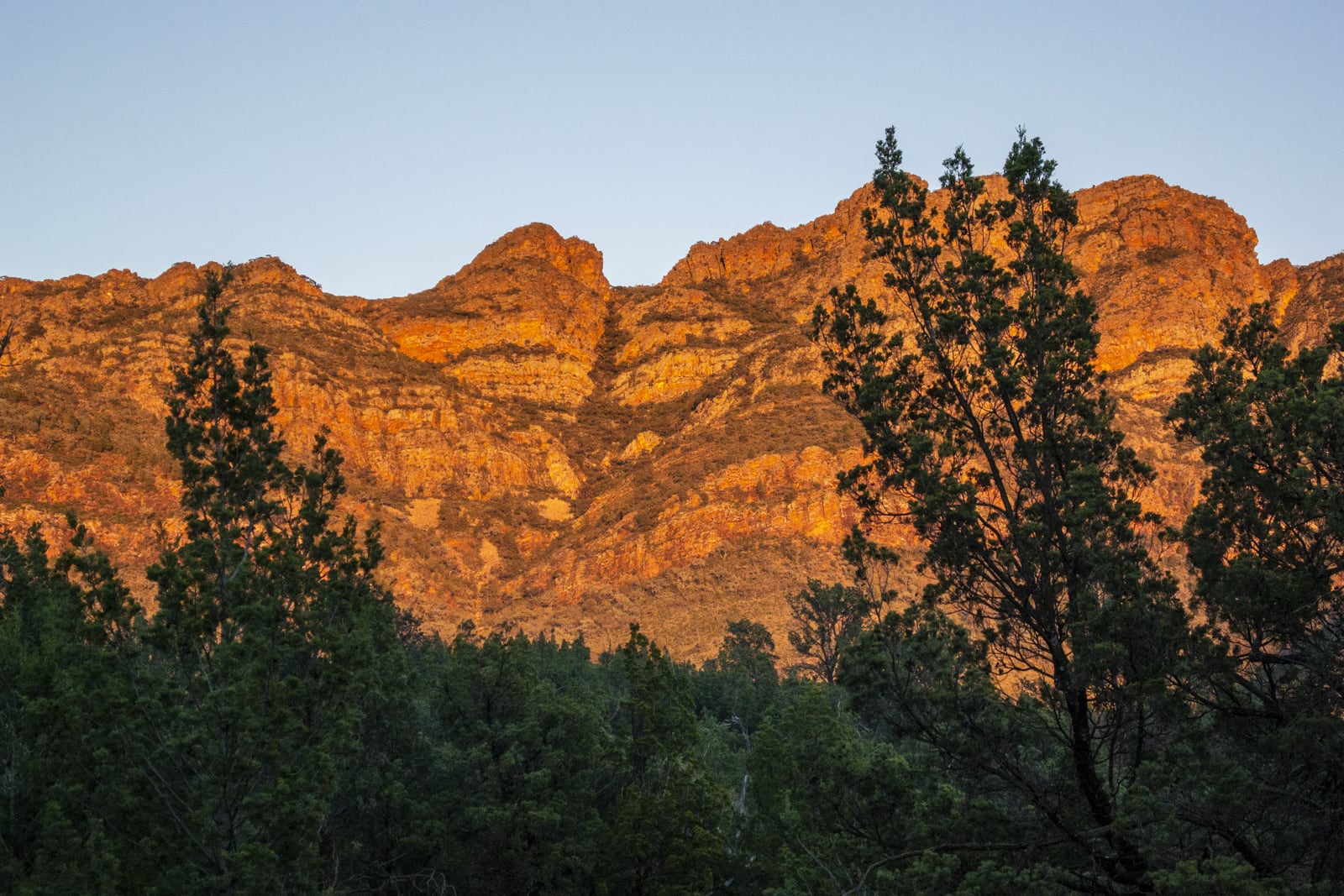
Mixed in with all this great walking is the chance to see how the brains trust behind Arkaba Conservancy has worked to re-introduce a number of native plants and animals (feral animals, such as foxes, goats, etc., have been near-totally cleared out). Dotted around the route are plenty of historical sites as well, including the Old Hills Homestead, just inside Wilpena Pound.
The end of each day will have you thinking it can’t get any better but we reckon the highlight is on the last morning: laying in your swag watching the sunrise light up the majestic Red Range that towers over the same-named campsite is simply brilliant and the perfect way to start the final day of walking. On this day, you follow a number of creeks and gorges before moving back into open rolling country and then over the last hills of the walk. From these last lofty viewpoints, you can see down to the finish point at Arkaba Homestead, with all of its included luxuries (think celebratory cold beer, another sumptuous three-course meal, and an even better brekky the following day) just waiting for you.
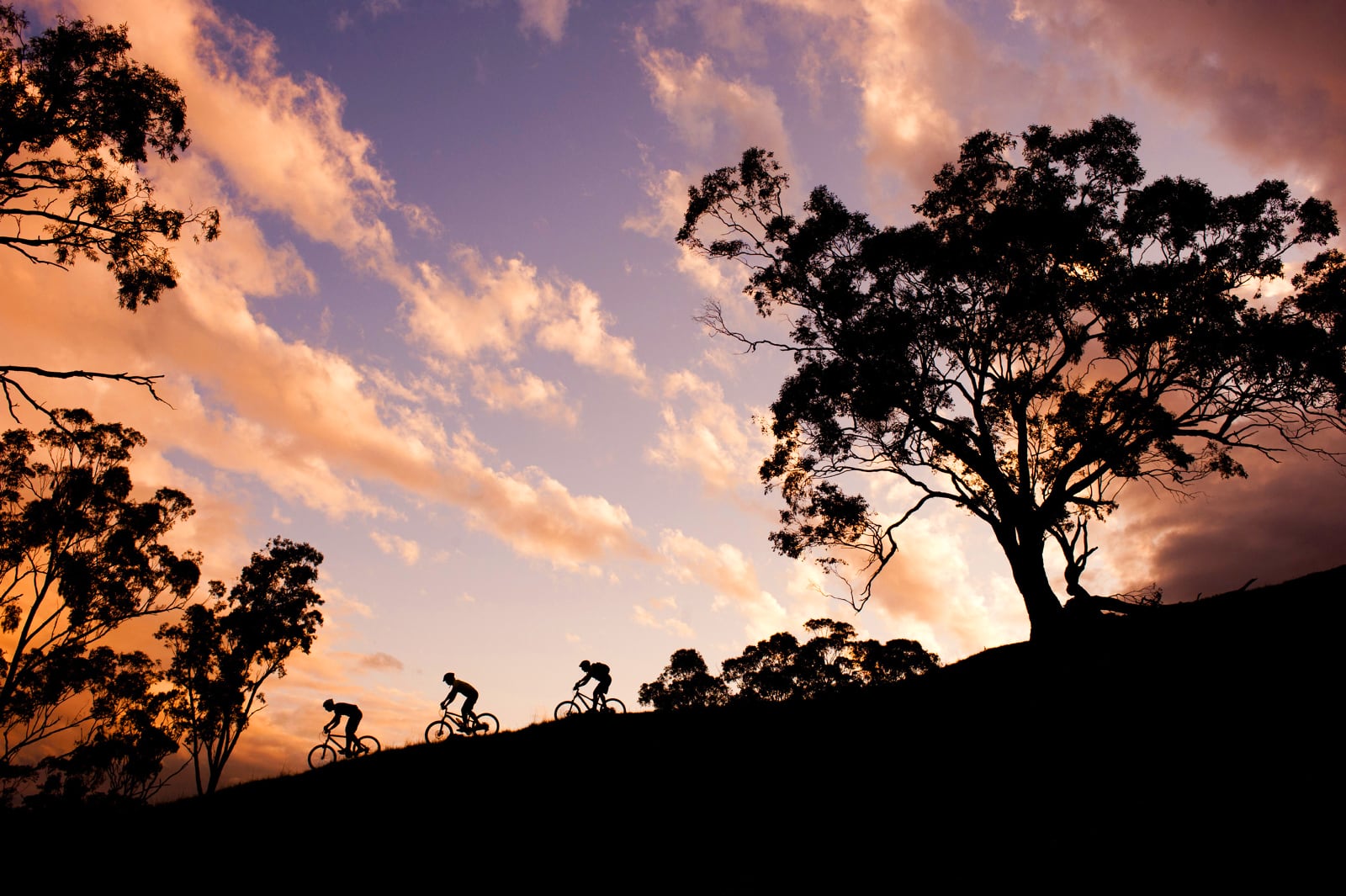
Mountain biking Adelaide
Adelaide is home of the Tour Down Under and has a well-earned reputation as a premium road cycling destination. But, that doesn’t mean the wide-tyre brigade misses out when visiting the South Oz capital; Adelaide would have to rank as one of – if not the – most mountain-bike friendly city in Australia.
With beaches on one side and the Mt Lofty Ranges on the other, Adelaide is the dream location, with the chance to razz a number of trails early in the day before heading to the beach for a dip. And there are enough trails here to repeat that process for as long as you like, too.

The other bonus of bringing your MTB to Adelaide is the state government’s massive support of the sport, with a master plan based around the Mt Lofty Ranges to include more than 200km of MTB trails, as well as a proposal to hopefully host the World Championships. This may sound amazing but it is just the most recent example of Adelaide’s long support of mountain biking. In fact, Eagle Mountain Bike Park, on the edge of the city, is claimed to be Australia’s oldest MTB park. This park’s mix of challenging riding is just a taster for what else is around, though, with plenty of trails for all riding abilities dotted around the city – and easily accessed.
One example of this is the trails in Belair National Park, easily accessed via a short train ride from the city, which you can then link to both Craigburn Farm’s renowned singletrack, as well as the trails in Sturt Gorge Recreation Park. And don’t forget Cleland Conservation Park, either; guided MTB tours here are brilliant. For the ultimate city view, though, we’d recommend adding in the Shepherds Hill Recreation Reserve trails, with brilliant views from up high that take in both the city and its beaches.
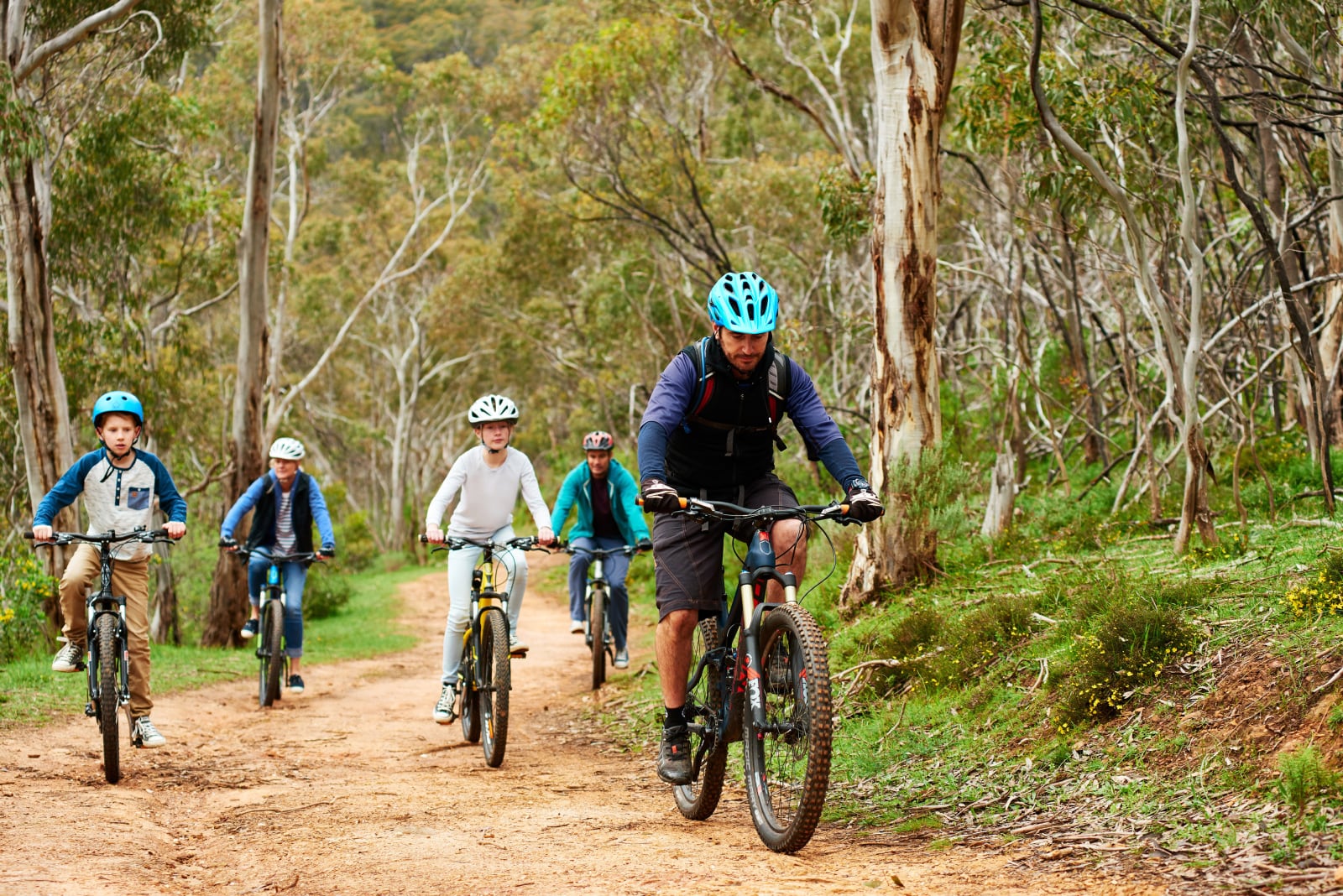
Finally – and you’ll need around three hours of driving from the city to reach it – there is the MTB Mecca of Melrose. This town, north of Adelaide and situated at the border of the southern Flinders Ranges, has its own MTB festival each year (the Melrose Fat Tyre Festival – yep, a cool name), and offers more than 100km of simply brilliant trails that will take you through some amazing South Oz outback country.
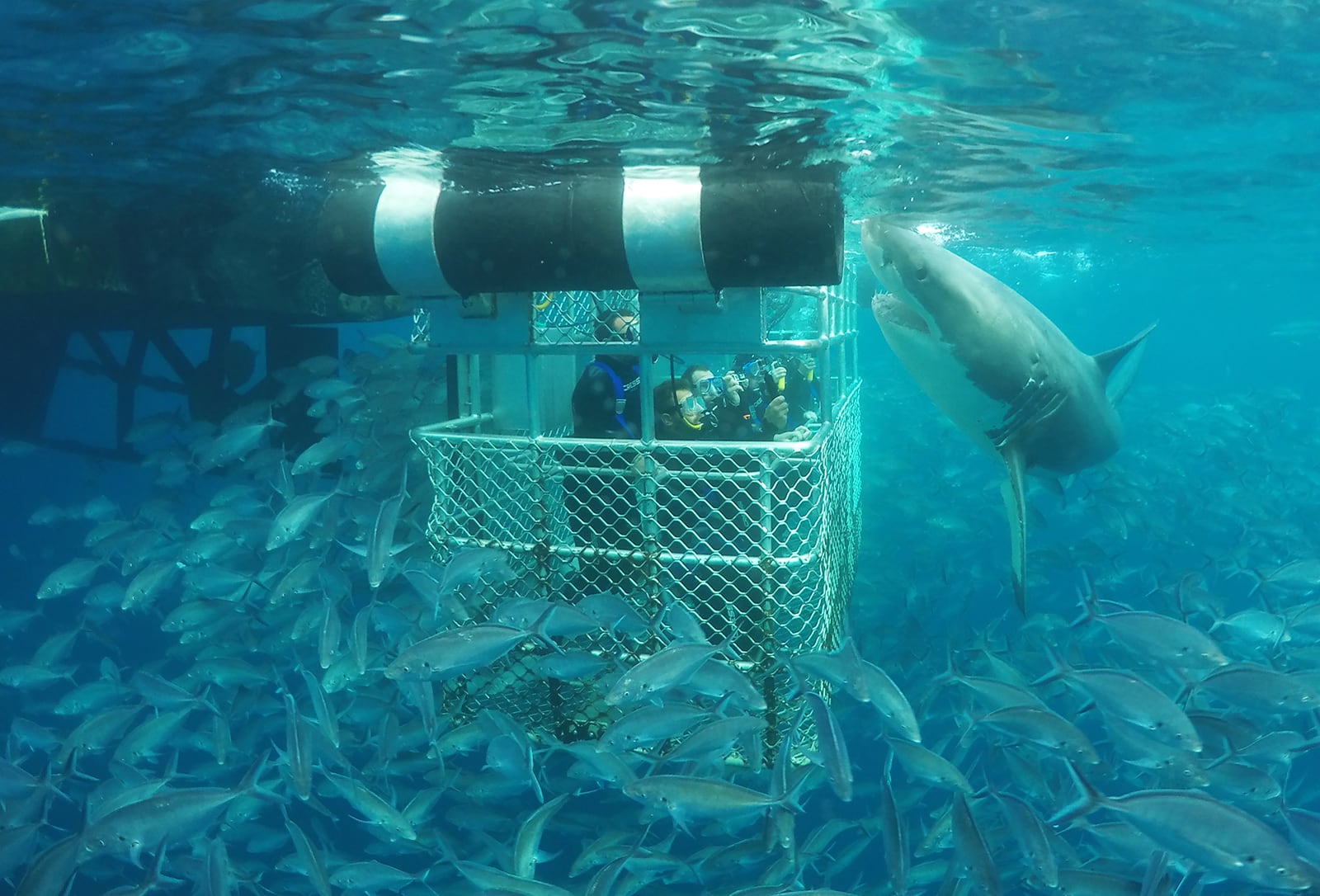
Diving with great white sharks
South Australia’s Port Lincoln is famous for a number of sizeable ‘locals’, including Olympic gold medal winning weightlifter, tuna fisherman Dean Lucan, and – speaking of fish – as being one of the best locations to view the formidable great white shark in its natural habitat; thankfully, from inside a cage. The cool water, a large population of sea lions (and plenty of fish, in general) makes for ideal conditions for these impressive apex predators.
Ironically, cage diving came about through a near-fatal shark attack on one of Australia’s (and the world’s) highly regarded shark experts – Rodney Fox, in 1963. It was this brush with death that led Fox to want to know more about these ‘perfect killing machines’ and led to him designing a protective cage for divers so he could get closer to the sharks and try and understand their behaviour. Fox’s cage diving led to documentaries (by Ron and Val Taylor) and a brush with Hollywood (footage for JAWS was filmed in this area).
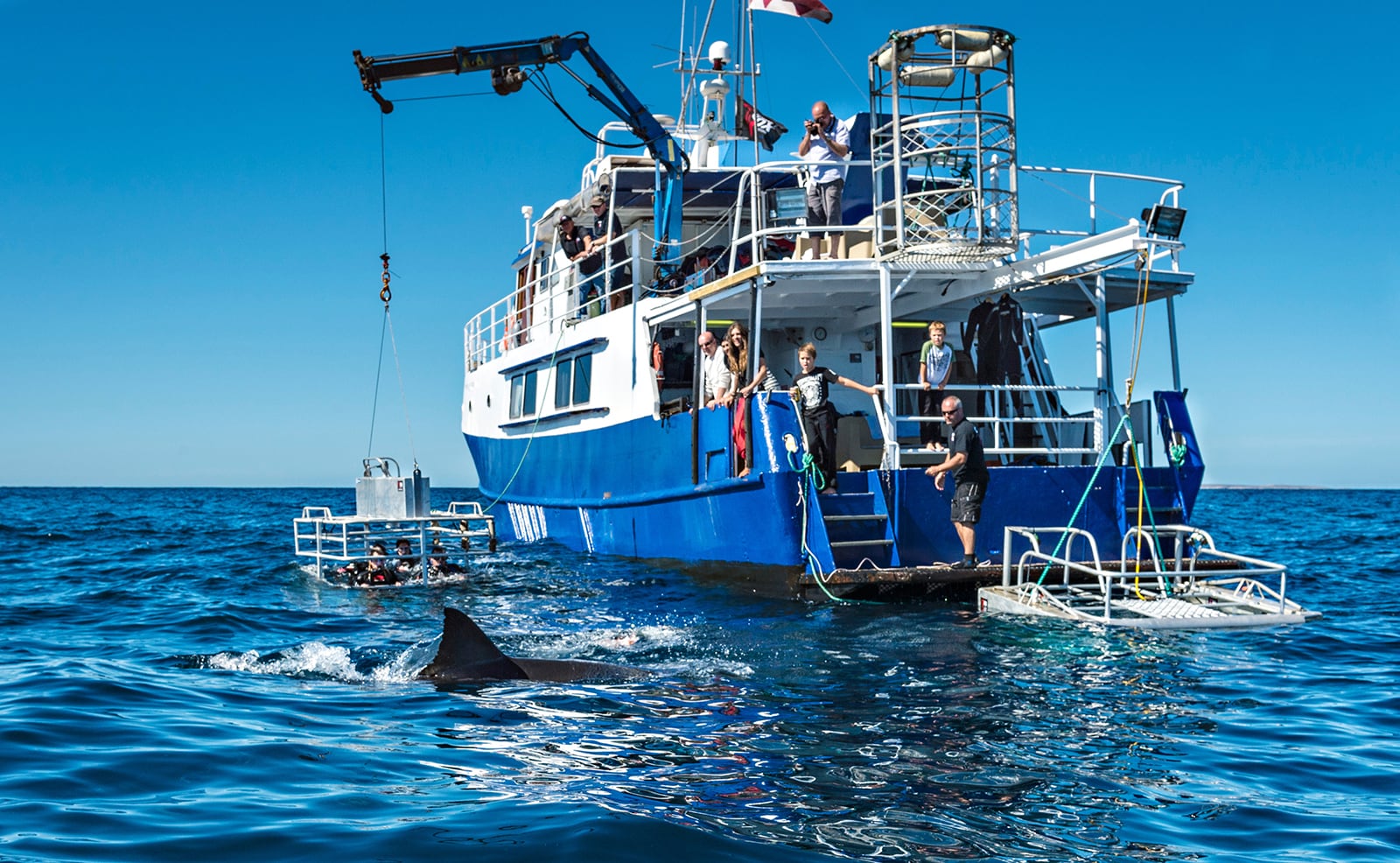
Today, keen (or brave?) divers can immerse themselves safely in the great white’s world while also (in the case of Rodney Fox Shark Expeditions, one of a number of cage diving companies) contributing to continued shark research. Surface cage diving is the most popular (available to ages 8 and above) with a number of excellent operators offering tours ranging from highly popular one-day experiences (Calypso Star Charters runs an excellent one based in Neptune Islands Marine Park), through to multi-day on-boat tours. Adventure Bay Charters also runs a unique “Aqua Sub”, a fully submersible glass viewing area that allows awesome views.
South Australia’s Port Lincoln is famous for a number of sizeable ‘locals’, including Olympic gold medal winning weightlifter, tuna fisherman Dean Lucan, and – speaking of fish – as being one of the best locations to view the formidable great white shark in its natural habitat; thankfully, from inside a cage. The cool water, a large population of sea lions (and plenty of fish, in general) makes for ideal conditions for these impressive apex predators.
Ironically, cage diving came about through a near-fatal shark attack on one of Australia’s (and the world’s) highly regarded shark experts – Rodney Fox, in 1963. It was this brush with death that led Fox to want to know more about these ‘perfect killing machines’ and led to him designing a protective cage for divers so he could get closer to the sharks and try and understand their behaviour. Fox’s cage diving led to documentaries (by Ron and Val Taylor) and a brush with Hollywood (footage for JAWS was filmed in this area).
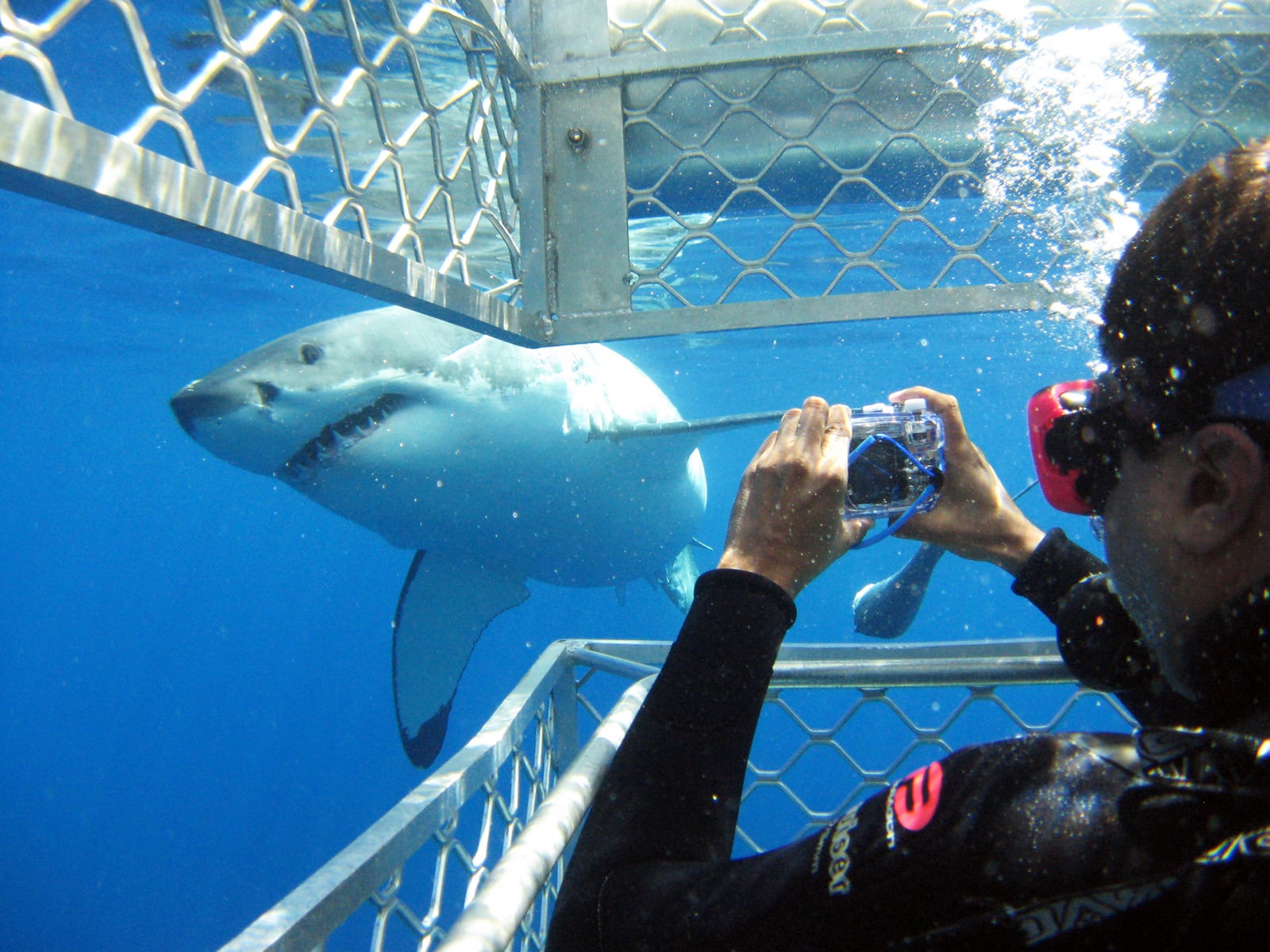
Today, keen (brave?) divers can immerse themselves safely in the great white’s world while also (in the case of Rodney Fox Shark Expeditions, one of a number of cage diving companies) contributing to continued shark research. Surface cage diving is the most popular (available to ages 8 and above) with a number of excellent operators offering tours ranging from highly popular one-day experiences (Calypso Star Charters runs an excellent one based in Neptune Islands Marine Park), through to multi-day on-boat tours. Adventure Bay Charters also runs a unique “Aqua Sub”, a fully submersible glass viewing area that allows awesome views.
For an even deeper (excuse the pun) experience, Rodney Fox Shark Expeditions and Adventure Bay Charters run ocean floor shark cage tours, with the cage set up 18-20 metres below the surface off the Neptune Islands. Here, not only do you have the chance to see these majestic mighty creatures up close, but you may also see stingrays, a variety of reef fish and even the always-chilled-out giant blue grouper. For this experience, though, you will need a PADI Open Water (OW) or equivalent certification. The ultimate diving adventure? It’d have to be pretty close.
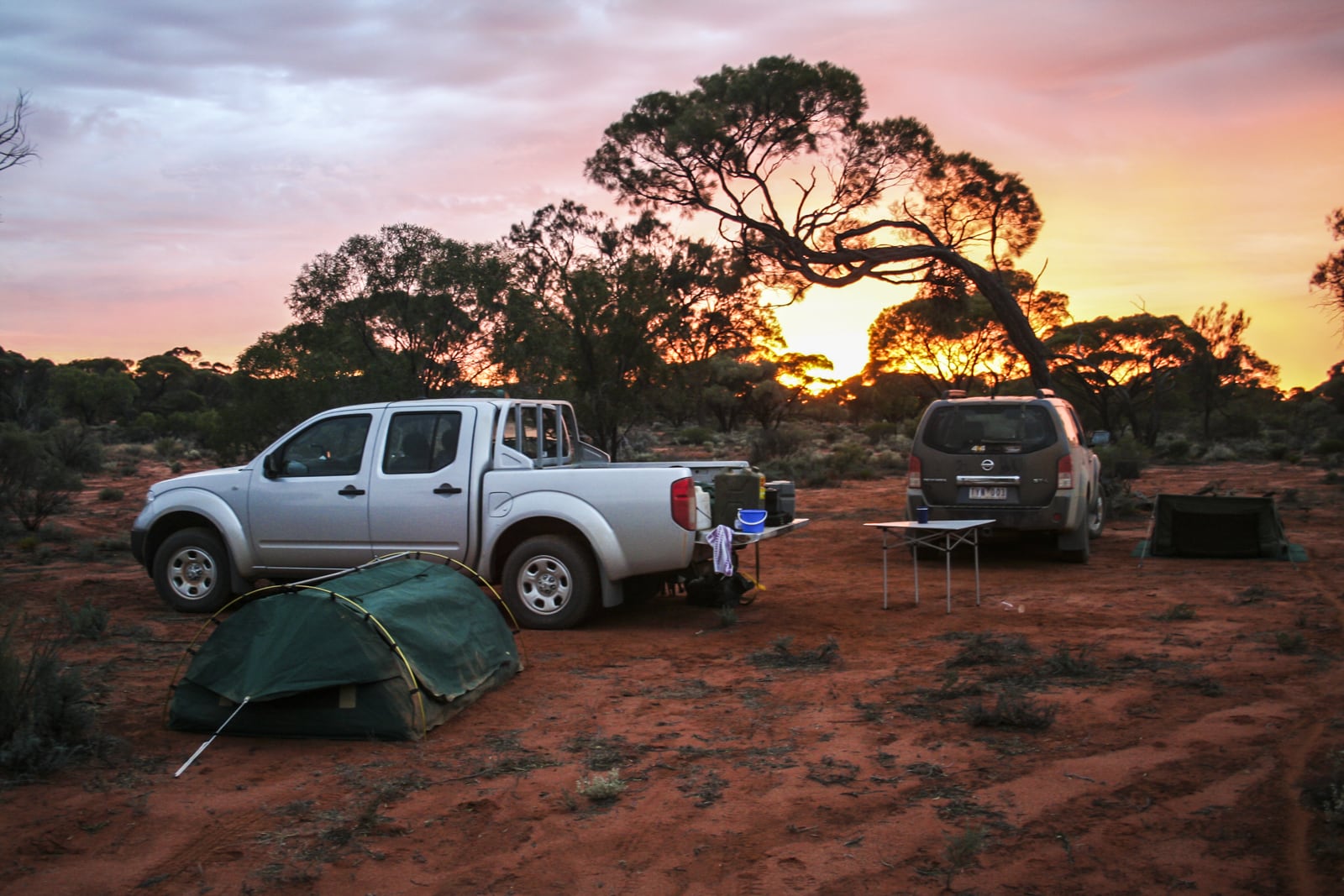
Exploring Googs Track
South Australia’s Googs Track is situated between Lone Oak Station (30km north of Ceduna) and the Trans Australian Railway and is a handy shortcut for those travelling from Australia’s south coast to the Red Centre. Along its 154km length, Googs Track includes more than 300 sand dunes, leading many to liken a trip along this isolated route through Yumbarra Conservation Park and Yellabinna Regional Reserve to a mini-Simpson Desert adventure.
Construction of the track started in the northern end in 1955 and it stopped near Mount Finke. Some years later, in 1973, a local farmer by the name of John (Goog) Denton pushed a track from his Lone Oak Station boundary in the south to join up with the northern track, completing what is now known as Googs Track in 1976.
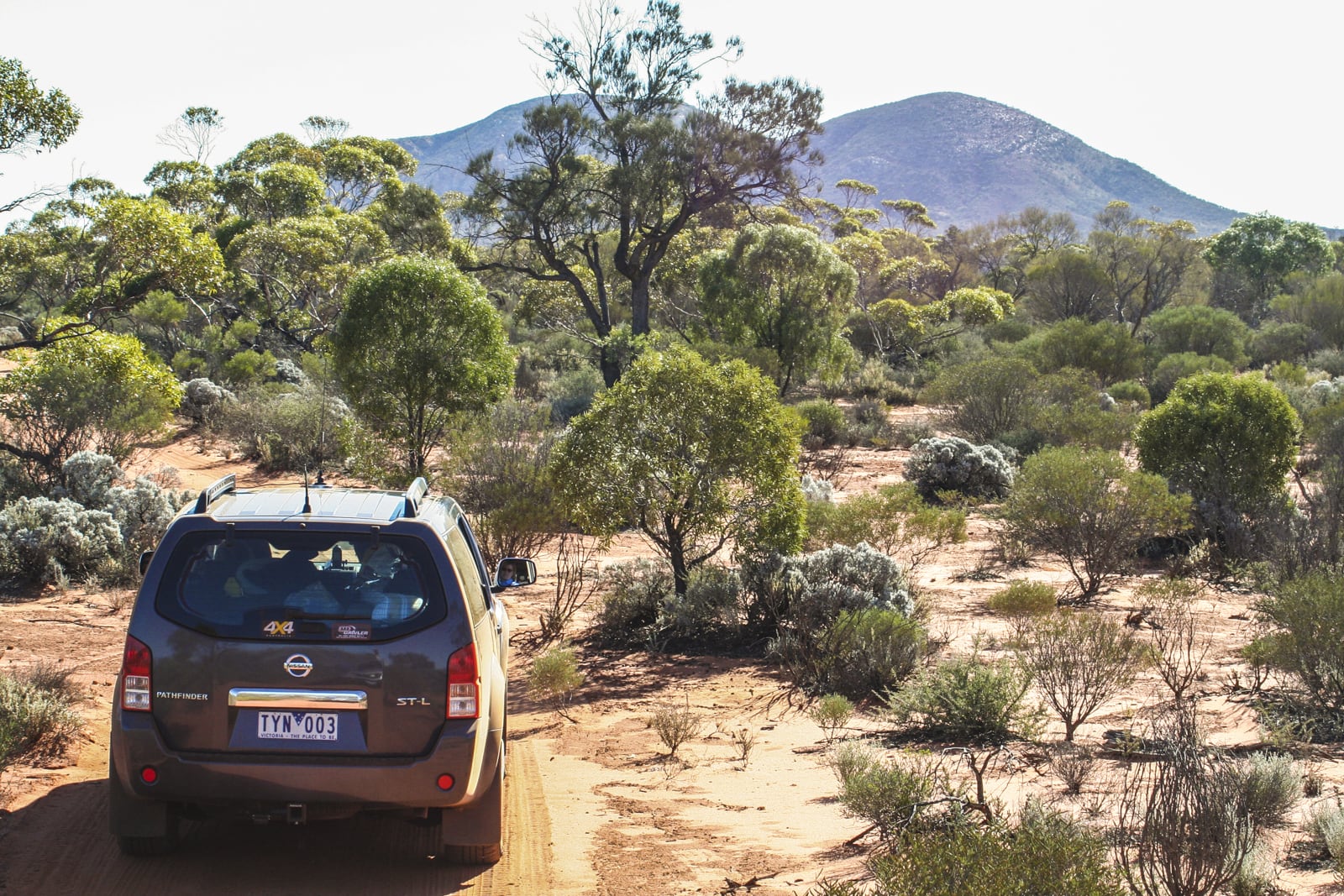
The drive along Googs Track is over relatively firm sand and the dunes are not particularly high, but due to the isolated nature of the area it is advised that travellers have at least some sand driving experience. A capable 4WD is required for this route and tyre pressures will need to be lowered for the sandy sections. Travellers should also carry all the fuel, food and water required for their intended stay and have appropriate communications equipment (satphone, PLB etc.).
Some highlights along the route include Googs Lake (a top spot to camp) and Mount Finke (climb it for a great view of the surrounding scrub country). You’ll also find well-marked memorials to John (Goog) Denton and his son Dinger, who helped his dad with construction of the track.
Once you reach the Trans Australian Railway at the northern end of the track, it’s a 40km drive east to the ghost town of Tarcoola. Don’t expect a cold beer at the Wilgena Hotel; it shut its doors back in 1999, and the last resident of the town pulled up stumps a couple of years ago. From Tarcoola it’s another 120km or so to Glendambo on the Stuart Highway. Make sure you check out the magnificent Lake Gairdner along the way; it’s the fourth largest salt lake in Australia. – Dean Mellor
More information
See the Adelaide Mountain Bike Club for all things MTB in the city.
Escape Goat Adventures is the go-to for guided MTB adventures.
For Yumbarra Conservation Park camping permits (on Googs Track) see NPWS South Australia.
See Arkaba Walk for more info on this guided hiking adventure.
For shark cage diving and all other things South Oz adventure, see South Australian Tourism Commission.
